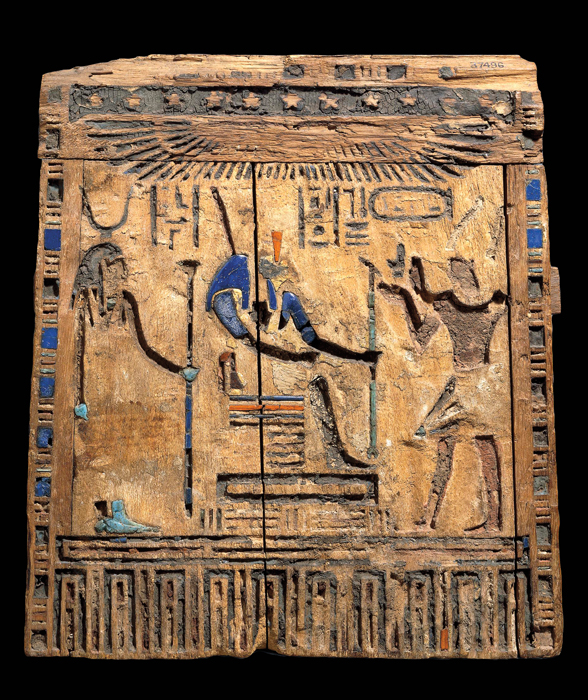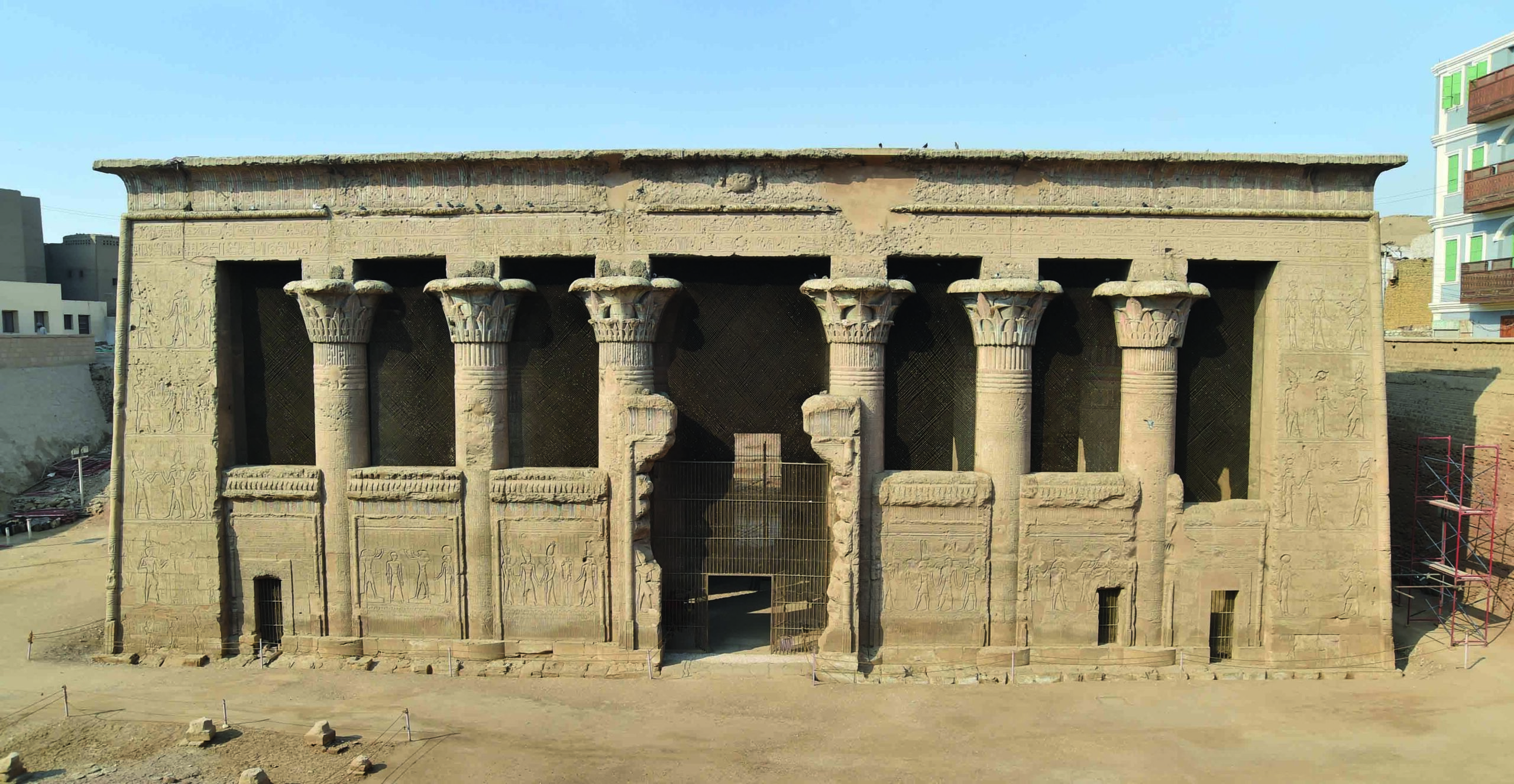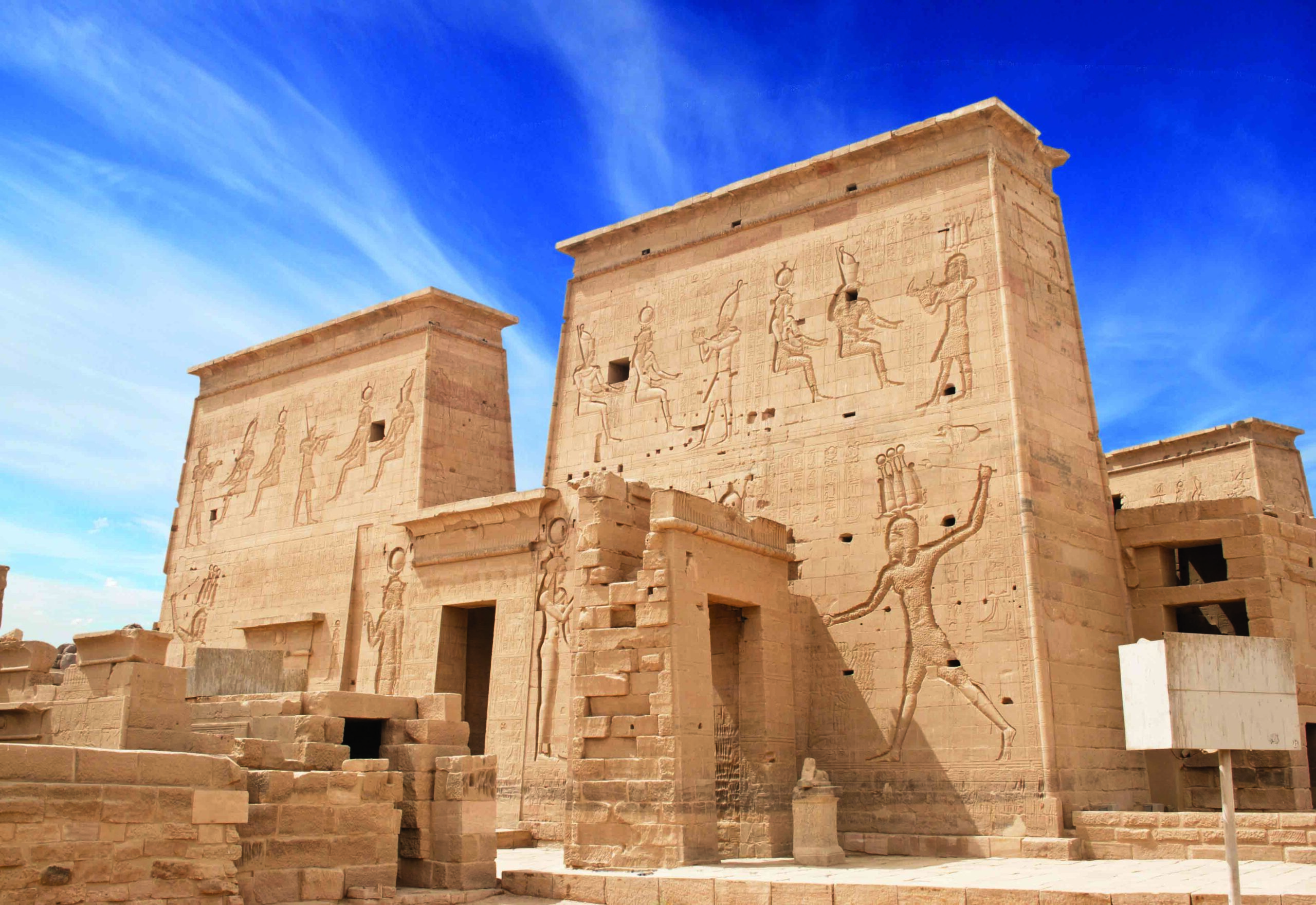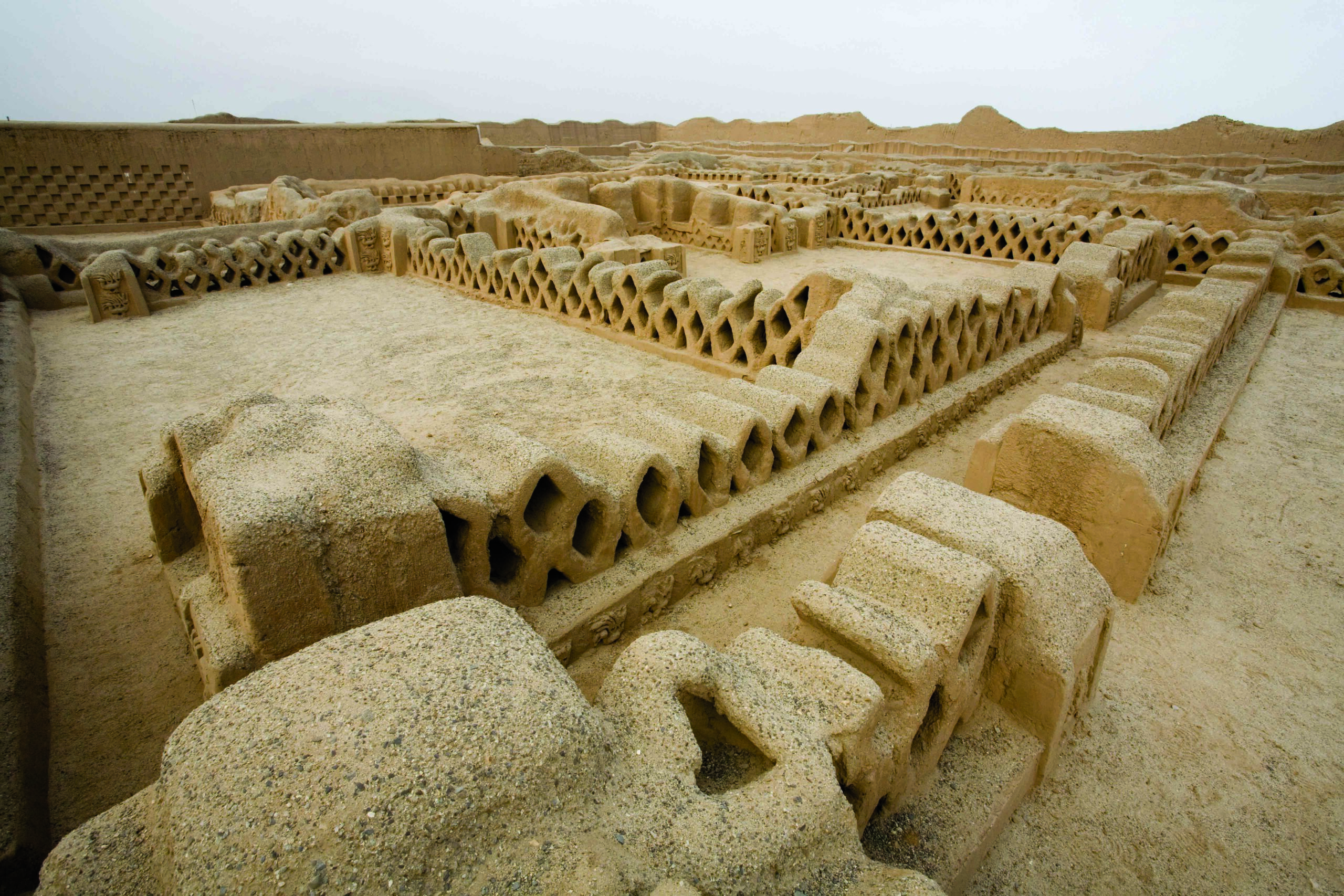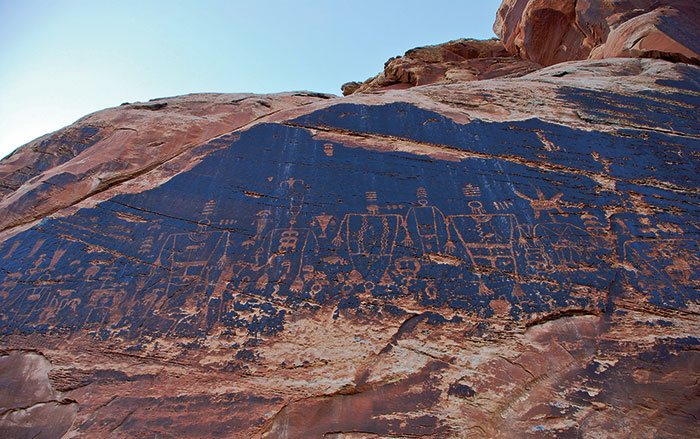
The rulers of Egypt's 26th Dynasty contended with the prospect of foreign invasion from the start. The initial threat came from the Assyrians to the northeast, but the dynasty’s founder, Psamtik I, made a strategic alliance with them. While playing the part of the loyal vassal, the pharaoh expanded from his power center in the Nile Delta to control all of Egypt, fortifying his armed forces with Greek mercenaries. Next on the horizon were the Babylonians, local rivals to the Assyrians, whom the Egyptians helped keep at bay by sending reinforcements. From the south, the Nubians, who had ruled Egypt as the 25th Dynasty, attempted to reclaim control, but were rebuffed. During the rule of the pharaoh Amasis, the Babylonians continued to pose a problem, though a manageable one.
Meanwhile, an empire the likes of which had never been seen before was amassing power and expanding from its core in present-day Iran. By 530 B.C., the Persian Achaemenid Empire controlled territory from the Aegean Sea to the Hindu Kush mountains. Amasis hired more Greek mercenaries and built up his naval forces, but when he died in 526 B.C. and was succeeded by his untried son, Psamtik III, the Persian king Cambyses struck quickly and added Egypt to the empire’s holdings.
Although the Persian conquest of Egypt was undoubtedly a traumatic, destabilizing event, many Egyptian officials made their peace with the new rulers. Most notable among these was Udjahorresnet, a high-ranking courtier during the reigns of both the final two 26th Dynasty pharaohs, Amasis and Psamtik III, and the first two Persian pharaohs, Cambyses and Darius I. Udjahorresnet is believed to have belonged to a powerful family based in the Nile Delta city of Sais, the capital of the 26th, or Saite, Dynasty. Under Amasis and Psamtik III, Udjahorresnet held a lengthy list of titles, including prince, count, royal seal bearer, sole companion of the pharaoh, true beloved king’s friend, scribe, inspector of council scribes, chief scribe of the great outer hall, administrator of the palace, and overseer of the royal kbnwt vessels. After the Persians seized power, he retained all these titles except the last one and assumed the new position of chief physician.
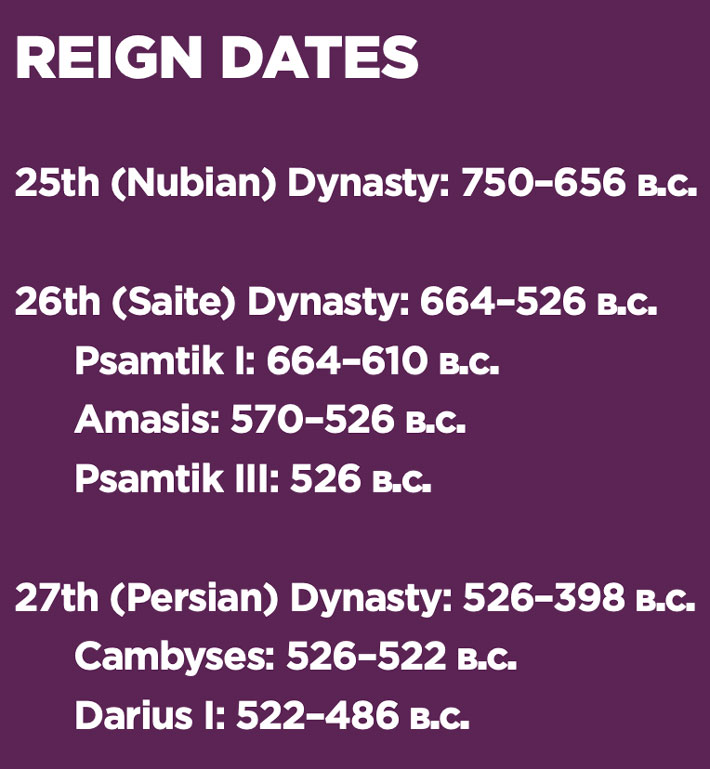
Udjahorresnet is one of the few known high officials of the 26th Dynasty to retain his rank under the Persians. His resilience has led some past scholars to label him a collaborator—or even a traitor—who sold out his country to maintain his elevated position. But some now argue that, far from being a turncoat, Udjahorresnet parlayed his closeness to the Persian kings to help preserve Egypt’s traditions of religion and rulership in a time of foreign domination. “On a military level, there was no chance to withstand the Persian invasion, so he was faced with the question of how to go on, how to deal with a very challenging political situation,” says Melanie Wasmuth, an Egyptologist at the University of Helsinki. “It seems that Udjahorresnet made the deliberate decision to convince at least some of his colleagues that the least problematic choice was to come to an agreement with the Persian rulers and fight for a kind of semiautonomy to make sure that as much of Egyptian culture as possible would survive.”
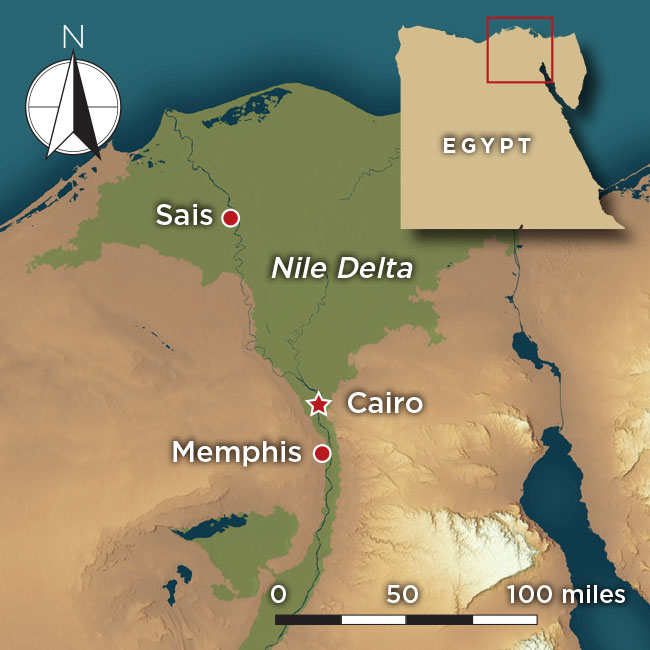
Udjahorresnet is known largely from a two-foot-tall basalt statue that is believed to have stood in the temple of the creator goddess Neith in Sais and that dates to the first few years of the rule of Darius I. Neith was the city’s patron goddess and her cult was ancient even by Egyptian standards, dating back as far as the Predynastic period, some 5,000 years ago. The goddess was credited with separating night from day and giving birth to the sun god Re. Her cult center at Sais was well established by the time of the Old Kingdom (ca. 2649–2150 B.C.), and the Saite pharaohs rebuilt a New Kingdom (ca. 1550–1070 B.C.) temple to the goddess on a gargantuan scale. In the nineteenth century, explorers found that the temple’s enclosure wall measured 90 feet thick and surrounded an area of roughly half a mile by a third of a mile. In addition to its religious significance, the temple was an important economic and political institution that was home to workshops, artists, and craftspeople.

Udjahorresnet’s statue is covered with an extensive autobiographical hieroglyphic inscription that includes recollections of his interactions with Cambyses and Darius I. In his dealings with Cambyses in particular, says Marissa Stevens, an Egyptologist and assistant director of the Pourdavoud Center for the Study of the Iranian World at the University of California, Los Angeles, Udjahorresnet outlines how he helped transform the Persian king from a foreign invader into a proper Egyptian pharaoh. Udjahorresnet first describes Cambyses as “great chief of all foreign lands,” a contrast with his description of the Saite pharaohs as “king of Upper and Lower Egypt.” Once Cambyses has conquered Egypt, Udjahorresnet upgrades him slightly, calling him “great ruler of Egypt and great chief of all foreign lands.” Stevens notes that the Egyptian terms “ruler” and “chief” tended to connote otherness and were applied to enemy leaders. Only once Udjahorresnet has conferred upon Cambyses an Egyptian throne name does he describe him in terms befitting a true pharaoh: “king of Upper and Lower Egypt, Mesutire.” “At every stage,” says Stevens, “Cambyses becomes more Egyptianized in his titles until he’s gone through a full initiation.”
The throne name that Udjahorresnet selected for Cambyses, Mesutire, translates to “Offspring of Re,” empha-sizing the legitimacy of Cambyses’ rule by invoking the Egyptian religious pantheon. Cambyses’ direct predecessors also had throne names connecting them with the sun god—Psamtik III was Ankhare, “Living Ka of Re,” and Amasis was Khenemibre, “Joined with the Heart of Re.” But Cambyses’ throne name boasted the most intimate connection with the god. “Cambyses most likely had many Persian officials who served as his advisers, but none of them would have been able to come up with the nuance of what Udjahorresnet did in that moment,” Stevens says. “By giving him a closer relationship to the deity than had ever been seen before, Udjahorresnet is indicating that Cambyses didn’t just have the right to rule, he is very much sanctioned by the gods in his takeover of Egypt.”
To further establish Cambyses’ bona fides as pharaoh, Udjahorresnet prompted him to turn his attention to the temple of Neith in Sais. At Udjahorresnet’s urging, the inscription states, Cambyses expelled a group of “foreigners” who had taken up residence in the temple, purified it, and restored it to its proper functioning, including employing temple personnel and celebrating feasts and festivals. Finally, Cambyses visited the temple himself and “touched the ground before her very great majesty as every king had done….This his majesty did because I caused him to know the importance of her majesty.” Stevens explains that “Udjahorresnet is doing two very important things with that part of his autobiography: He is being the loyal adviser to the king and simultaneously he is saying, ‘I am so devout and such a good Egyptian, I reminded pharaoh that this is what a good king does to restore Sais to its former glory.’” Likewise, she suggests, Cambyses recognized, quite possibly under Udjahorresnet’s tutelage, the importance of securing the former capital of the dynasty he had overthrown. “Udjahorresnet describes the temple as being in disarray and then Cambyses rebuilds it,” Stevens says. “That’s a very common Egyptian trope, and the fact that he’s utilizing this trope was a strategy, because he knew people would pick up on it: ‘Oh, Cambyses is investing in temple spaces and in the workshops and the craftspeople and the artists who are attached to these temples.’”
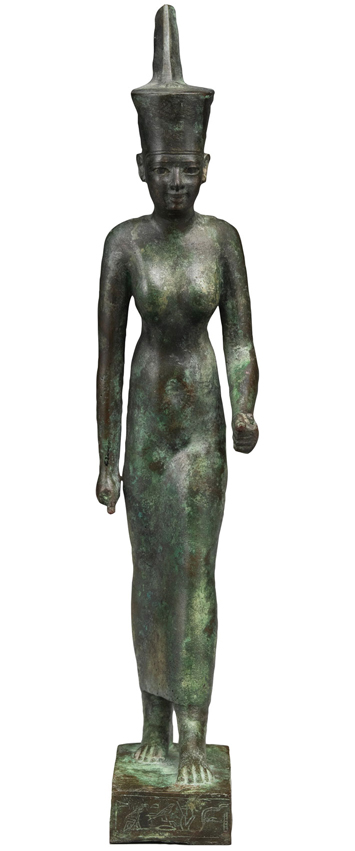
Exactly how Udjahorresnet managed to become such a close adviser to Cambyses is unclear. His connection to Sais and his deep understanding of the workings of its temple of Neith were certainly key factors. Wasmuth suggests that, based on the titles he held under the Saite pharaohs, in particular his role as overseer of the royal kbnwt vessels, Udjahorresnet was likely a younger son of a major priestly family. The translation of kbnwt has been debated, with some scholars arguing that it denotes military ships such as triremes, and others arguing that it can describe a shipping fleet. An inscription from Udjahorresnet’s sarcophagus also identifies him as overseer of foreign mercenaries. “It’s clear that at some point he was a major figure in the Egyptian military,” Wasmuth says. “In priestly families, this was not typically a job that was taken by the eldest son, who would inherit the priestly office.” Udjahorresnet’s prospects seem to have improved under Cambyses, when he became chief physician, a position known to involve direct access to the king.
Many aspects of Udjahorresnet's statue are typically Egyptian. It captures him standing in the traditional Egyptian pose, with his left foot in front of his right. He holds a small shrine, or naos, in which the god of the afterlife, Osiris, is depicted. It is thus known as a naophorous, or naos-carrying, statue, a style that was very popular in Egypt at the end of the 26th Dynasty and dated back at least a millennium before that. Likewise, significant portions of the statue’s inscription address common Egyptian themes. Udjahorresnet details his offerings to Osiris, lists the ways he has honored Neith, enumerates how he protected his family and saved the people of Sais from an unspecified “very great disaster,” and appeals to the gods to remember his pious deeds.
However, Henry Colburn, an archaeologist specializing in ancient Iran at New York University, points out that other elements of the statue suggest Udjahorresnet’s identity was more complicated. For instance, he wears a long kilt over a sleeved jacket. These Egyptian garments, says Colburn, combine to resemble the Persian court robe worn by courtiers, soldiers, and the king himself in reliefs at the capital of the Achaemenid Empire, Persepolis, which was founded by Darius I. In addition, Udjahorresnet wears a typically Achaemenid bracelet with a lion head at each end. Likely referring to this bracelet, Udjahorresnet claims in the inscription that his masters gave him golden ornaments as a reward for his service. Colburn notes that this seems to fit into an Egyptian tradition in which pharaohs would give favored courtiers “gold of honor”—though in this case the pharaohs were likely Persian. “He’s got things that make sense if you look at the statue with Persian eyes, and that make sense if you look at the statue and read the inscriptions with Egyptian eyes,” Colburn says. “It’s very remarkable that way.”
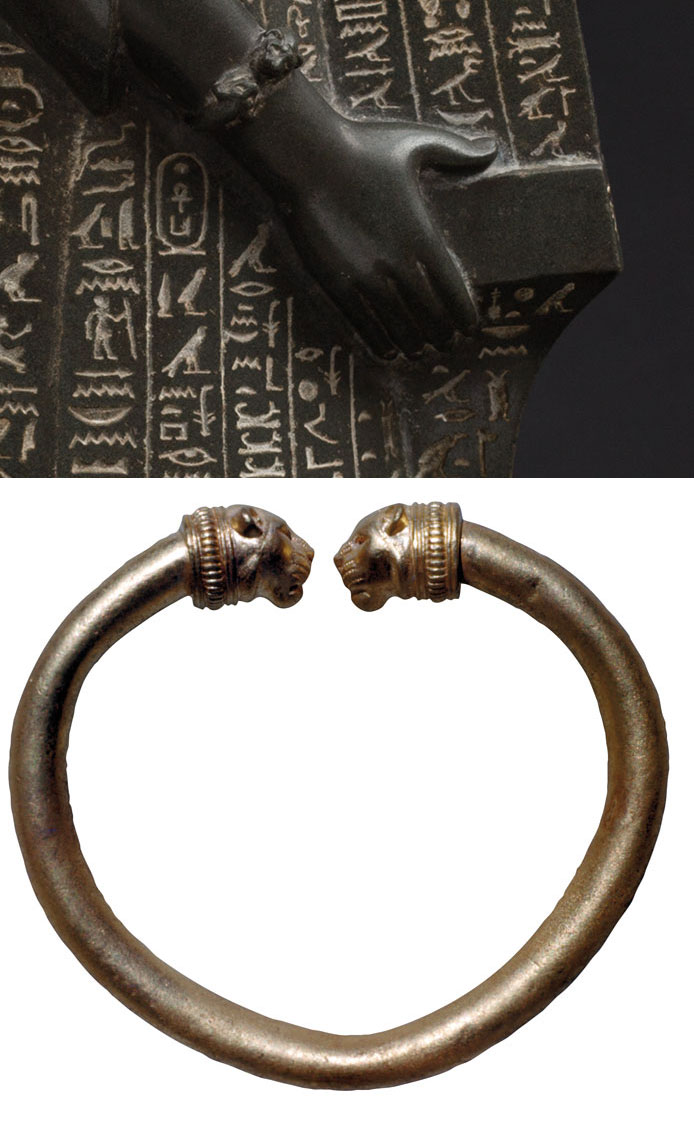
The blending of Egyptian and Achaemenid features in Udjahorresnet’s statue is all the more notable as the Achaemenid Empire did not require those it conquered to assimilate. Indeed, its leaders took great pride in the diversity of its subject peoples. “It’s important to the Persians for Egypt to retain a specific identity as Egypt,” says Colburn. “I think they never really exerted any pressure to conform, so it’s remarkable that you get people like Udjahorresnet who do it anyway.” Statues of several other Egyptian officials who served under the Persian pharaohs help to place Udjahorresnet’s choices in context. Ptahhotep, who was overseer of the treasury, probably at the temple of the creator god Ptah in the city of Memphis, made choices similar to Udjahorresnet’s in how he was depicted in his naophorous statue. He also wears Egyptian garments that combine to mimic Persian attire, as well as an Achaemenid-style torc with an ibex head at each end around his neck. However, an official named Horwedja, who served as finance minister, presents as entirely Egyptian in his naophorous statue. He wears a short Egyptian kilt and no jewelry. According to Colburn, Horwedja’s position placed him at a higher rank with greater access to the Persian king or satrap, the king’s governing representative in Egypt, than Ptahhotep—though he was not as elevated as Udjahorresnet. “The standard cynical thinking would be that the highest-ranking Egyptians were most apt to adopt Persian identities,” says Colburn, “but the example of Horwedja shows that that’s not true at all.”
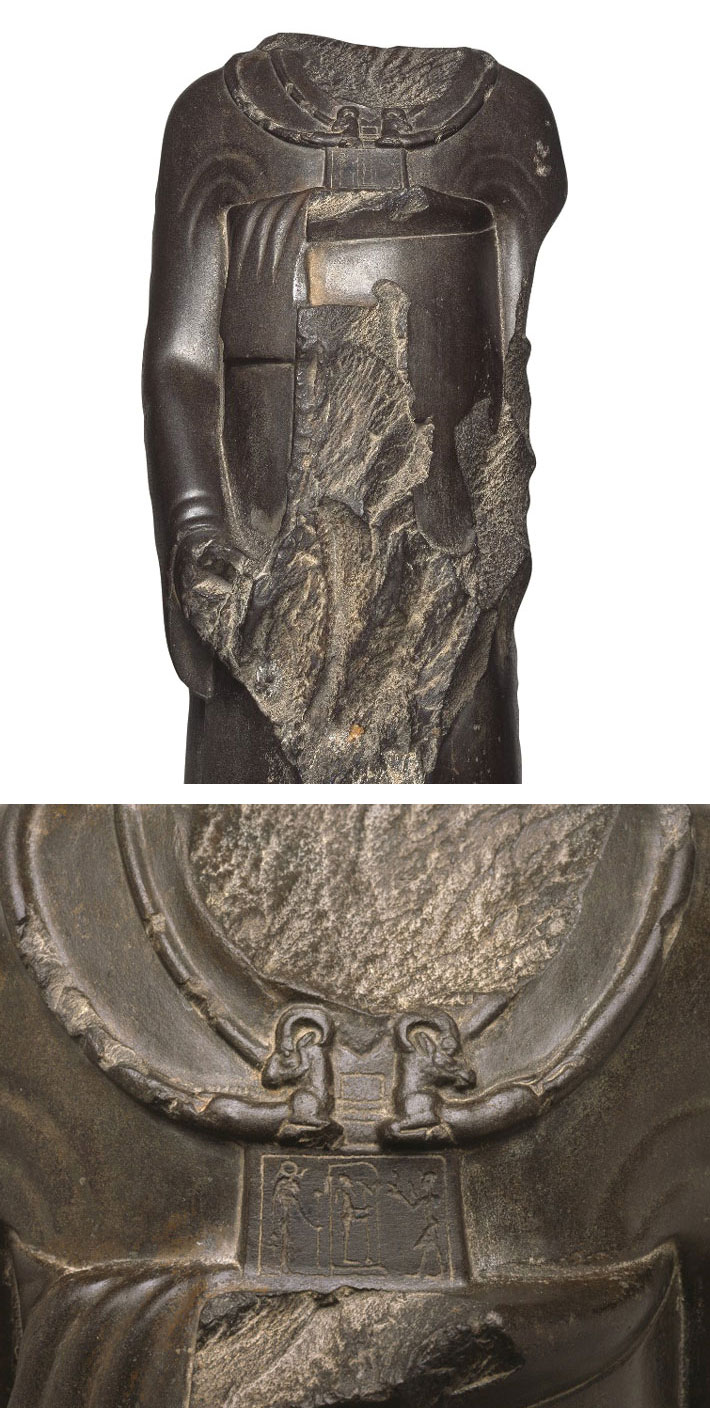
Late in his career, Udjahorresnet appears to have been an adviser to Darius I at the Persian court in Susa in modern-day Iran. According to the inscription on Udjahorresnet’s statue, Darius I sent him back to Egypt to restore an institution called the House of Life, possibly at the temple of Neith in Sais, that had fallen into disarray. Scholars debate what exactly the House of Life was, though it seems to have been a sort of library where essential religious texts were stored. Colburn believes this assignment was a step down from Udjahorresnet’s previous roles under the Persian kings. “It’s important, but it’s nothing like the high courtly position he seems to have had before,” says Colburn. “It’s possible this was a sort of retirement gig. Perhaps Udjahorresnet wanted to go back to Egypt and so the king arranged a comfortable position for him.” This may have reflected a desire to be buried in the land of his ancestors. Wasmuth, however, suggests that the House of Life was also an important repository of medical knowledge and that Darius I may have tasked Udjahorresnet with attending to the institution at a time when Egyptian physicians in his court had failed to properly treat an ankle injury he had suffered. “It’s equally possible that this wasn’t a retirement position, but another important placement in which Darius sends one of his exceedingly loyal, close advisers back to Egypt to make sure things go there as planned,” she says.
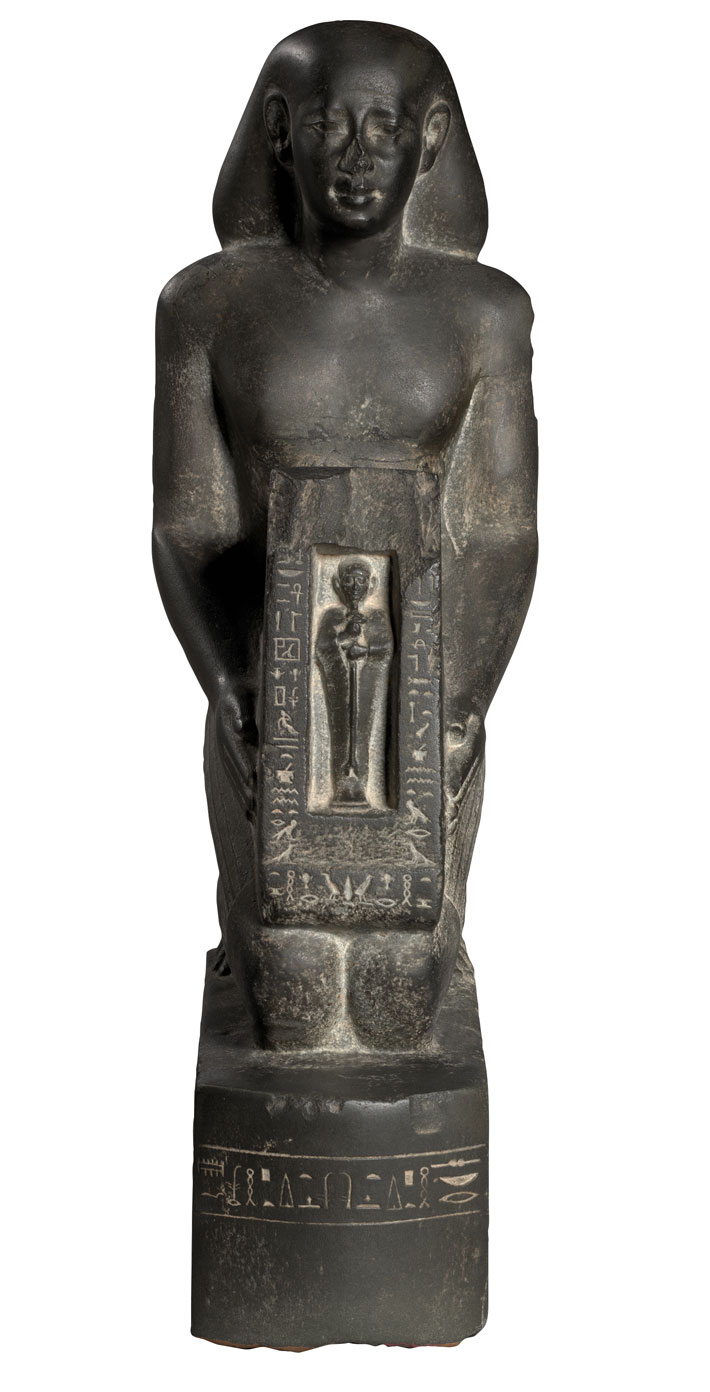
Udjahorresnet was ultimately buried in his home country, in the Abusir necropolis near Memphis. Despite the inclusion of some Persian-inflected attire in his statue, Udjahorresnet’s resting place is a typically Egyptian shaft tomb. Evidence found there during excavations from 1980 to 1993, including tablets in the foundation deposits inscribed with the names of the pharaoh Amasis, suggests that it was under construction around 530 B.C. The inscriptions on the burial chamber’s walls and the inner and outer sarcophagi are all standard Egyptian texts designed to ensure a smooth transition to the afterlife. Archaeologists also uncovered several figurines inscribed with text identifying Udjahorresnet as chief physician. As this was a title he assumed only under the Persian kings, work on the tomb clearly continued after the fall of the Saite pharaohs. No trace of Udjahorresnet’s body has been found in the tomb, and in the past some scholars have suggested that he was never actually buried in it. But, Ladislav Bareš, an Egyptologist at the Czech Institute of Egyptology, who was part of the team that excavated the tomb, points out that it was heavily looted and says that a cache of mummification materials found close to the tomb establishes that Udjahorresnet was indeed buried there.
Udjahorresnet's naophorous statue is the only depiction of him known to exist today. Based on statue fragments that have been discovered in both Memphis and Cairo, Wasmuth argues that there were likely at least two additional inscribed naophorous statues of him, which she believes stood in the temple of Ptah in Memphis and the temple of the creator god Atum or of Re-Horakhty in the religious center of Heliopolis. Re-Horakhty was a merger of Re and the sky god Horus. “It’s really, really exceptional to have the same type of statue displayed in two or more different temples,” she says. “To me, this argues for a very deliberate display strategy that needs to be explained.” In this case, Wasmuth suggests, the goal was likely to promote the legitimacy of the rule of Egypt by Persian pharaohs, for whom being accepted by the country’s major temple institutions was essential. “The temples are potentially a hotbed for rebellion,” Wasmuth says, “because they are so tied to the Egyptian kingship concept and have the greatest potential to lose something under Persian rule.”
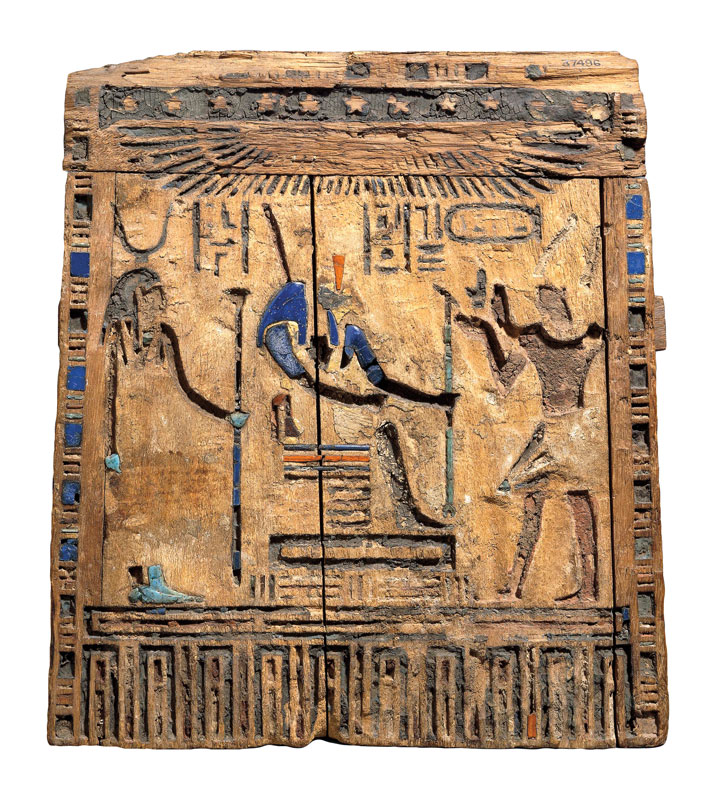
There is evidence suggesting that Udjahorresnet was venerated long after his death, a prestigious distinction for a nonroyal Egyptian figure. One of the few others to be accorded this honor was Imhotep, the architect of the step pyramid at the necropolis of Saqqara for the pharaoh Djoser (reigned ca. 2630–2611 B.C.). Wasmuth points to a fragment of a statue of Udjahorresnet that was discovered in the 1950s in Memphis, where it had been reused in the construction of a pillar. The fragment includes an inscription indicating it was commissioned by a priest of Neith in the fourth century B.C. “I made the name of the chief physician Udjahorresnet live 177 years after his time, since I had rediscovered his statue in a state of ruin,” the inscription reads. This suggests that Udjahorresnet’s achievements were still known and seen as worthy of celebration.
Given that the creation of the new statue may have coincided with a later period when the Persians again ruled Egypt, from 340 to 332 B.C., it’s possible that Udjahorresnet’s example of cooperation was seen as particularly relevant. “You could argue,” says Colburn, “that the Persians were back, so Udjahorresnet, who had developed a way to work with them, once again becomes a useful exemplar.” Udjahorresnet’s model of perpetuating Egyptian traditions under foreign control would be extremely useful over the next few centuries. Egypt experienced nearly 300 years of Macedonian and Greek rule—with the foreign rulers adopting the title of pharaoh and building new temples to the Egyptian gods—before finally being absorbed by the Romans in the first century B.C.


